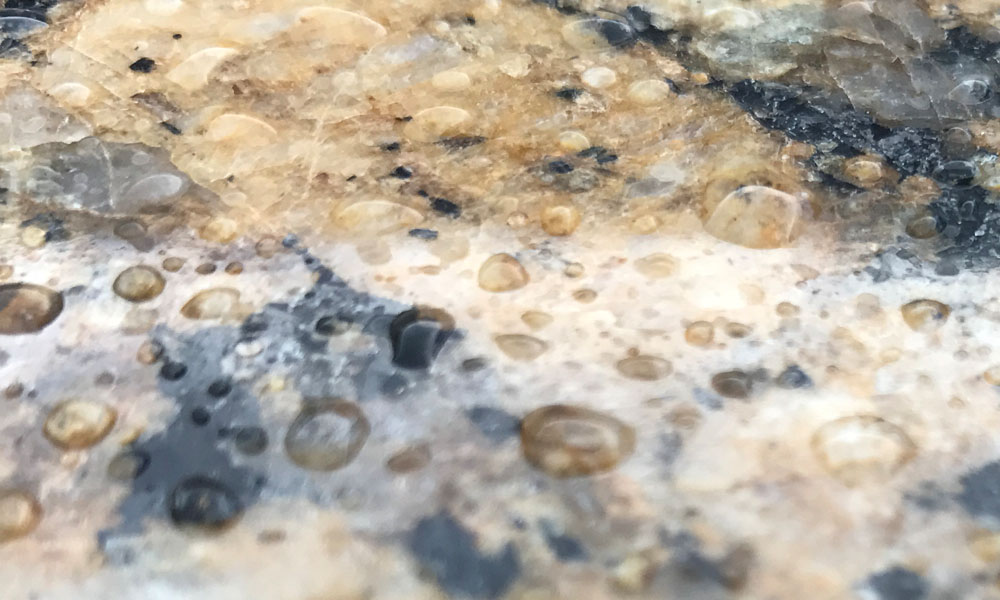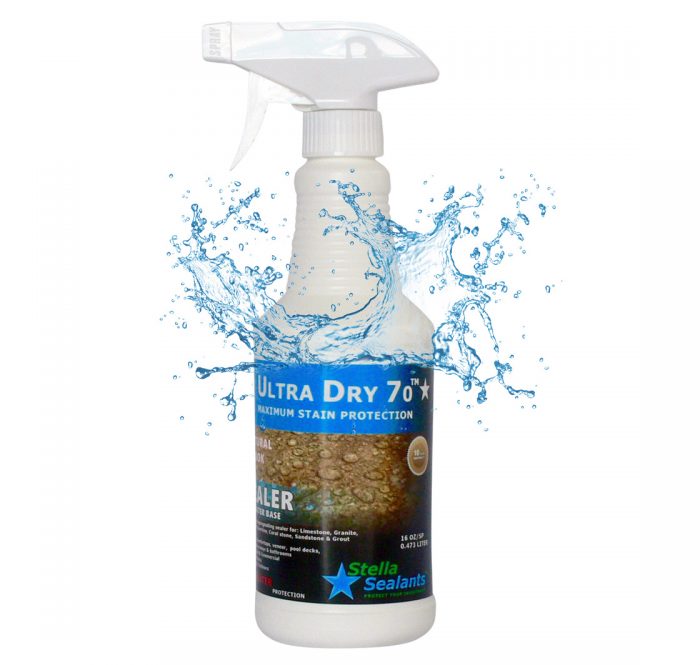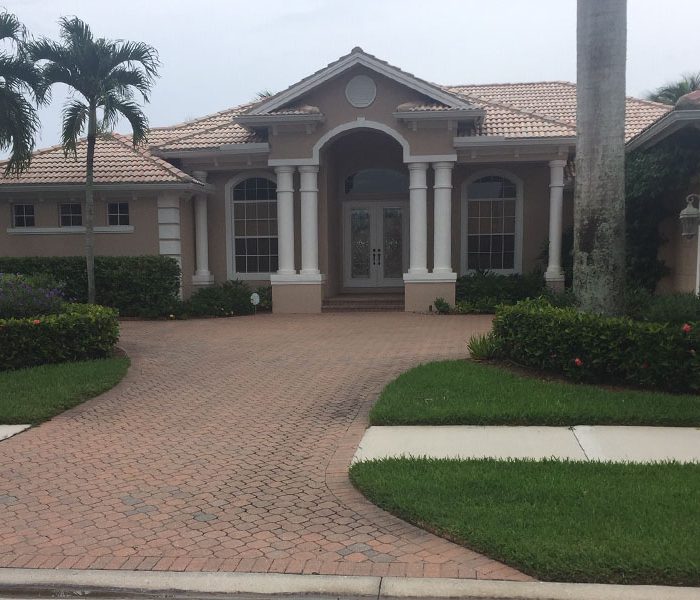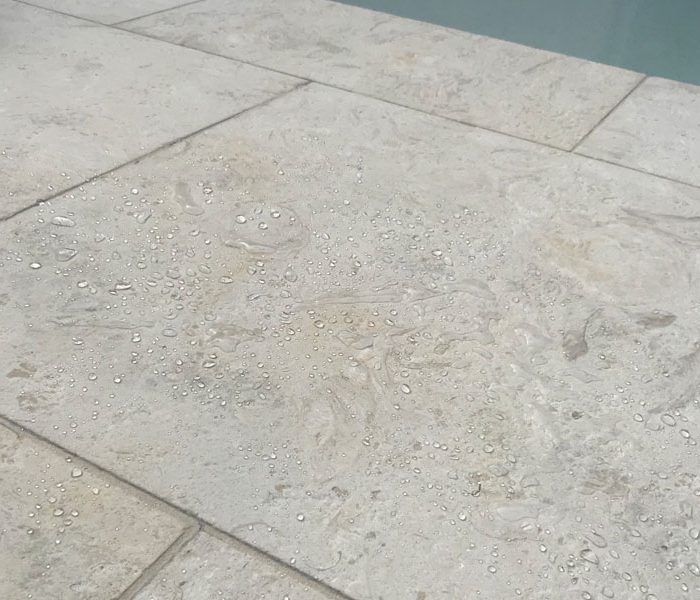Granite Sealer
Granite Sealer
Granite is a common type of felsic intrusive igneous rock that is granular and phaneritic in texture.
Granites can be predominantly white, pink, or gray in color, depending on their mineralogy.
The word “granite” comes from the Latin granum, a grain, in reference to the coarse-grained
structure of such a holocrystalline rock.
Strictly speaking, granite is an igneous rock with between 20% and 60% quartz by volume,
and at least 35% of the total feldspar consisting of alkali feldspar, although commonly
the term “granite” is used to refer to a wider range of coarse
grained igneous rocks containing quartz and feldspar.
The term “granitic” means granite-like and is applied to granite and a group of intrusive igneous
rocks with similar textures and slight variations in composition and origin.
These rocks mainly consist of feldspar, quartz, mica, and amphibole minerals, which form an interlocking
somewhat equigranular matrix of feldspar and quartz with scattered darker biotite mica and amphibole
(often hornblende) peppering the lighter color minerals.
Occasionally some individual crystals (phenocrysts) are larger than the groundmass,
in which case the texture is known as porphyritic.
A granitic rock with a porphyritic texture is known as a granite porphyry.
Granitoid is a general, descriptive field term for lighter-colored, coarse-grained igneous rocks.
Petrographic examination is required for identification of specific types of granitoids.
The extrusive igneous rock equivalent of granite is rhyolite.
Granite is nearly always massive (lacking any internal structures), hard and tough,
and therefore it has gained widespread use throughout human history as a construction stone.
The average density of granite is between 2.65 and 2.75 g/cm3 (165.4 – 171.7 lb/ft3),
its compressive strength usually lies above 200 MPa, and its viscosity near STP is 3–6 • 1019 Pa·s.
The melting temperature of dry granite at ambient pressure is 1215–1260 °C (2219–2300 °F);
it is strongly reduced in the presence of water, down to 650 °C at a few kBar pressure.
Granite has poor primary permeability, but strong secondary permeability.
Granite containing rock is widely distributed throughout the continental crust.
Much of it was intruded during the Precambrian age;
it is the most abundant basement rock that underlies the relatively thin sedimentary
veneer of the continents.
Outcrops of granite tend to form tors and rounded massifs.
Granites sometimes occur in circular depressions surrounded by a range of hills,
formed by the metamorphic aureole or hornfels. Granite often occurs as relatively small,
less than 100 km² stock masses (stocks) and in batholiths that are often associated with
orogenic mountain ranges.
Small dikes of granitic composition called aplites are often associated with the margins
of granitic intrusions. In some locations, very coarse-grained pegmatite masses occur with granite.
Stella Sealants has great Granite sealer product you can find it in our products section.







